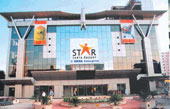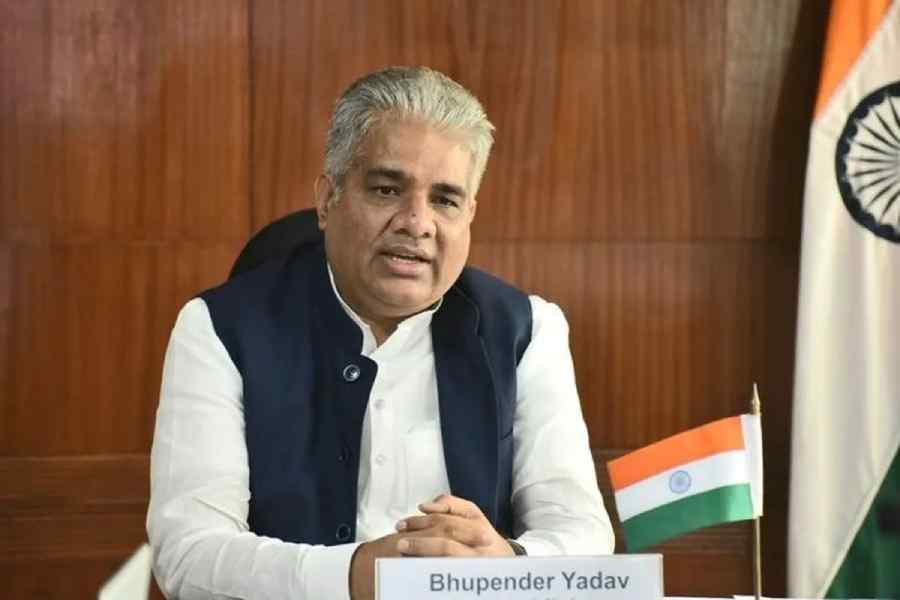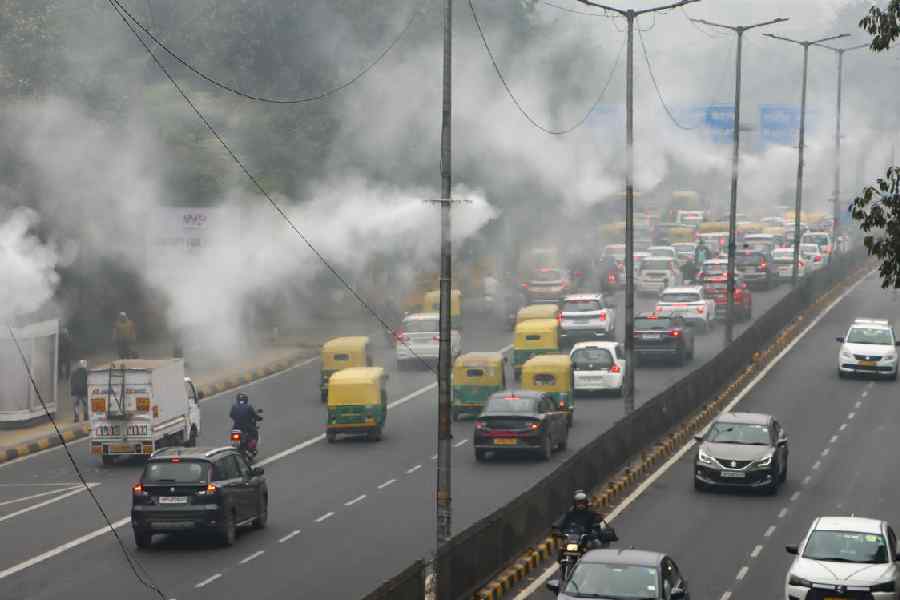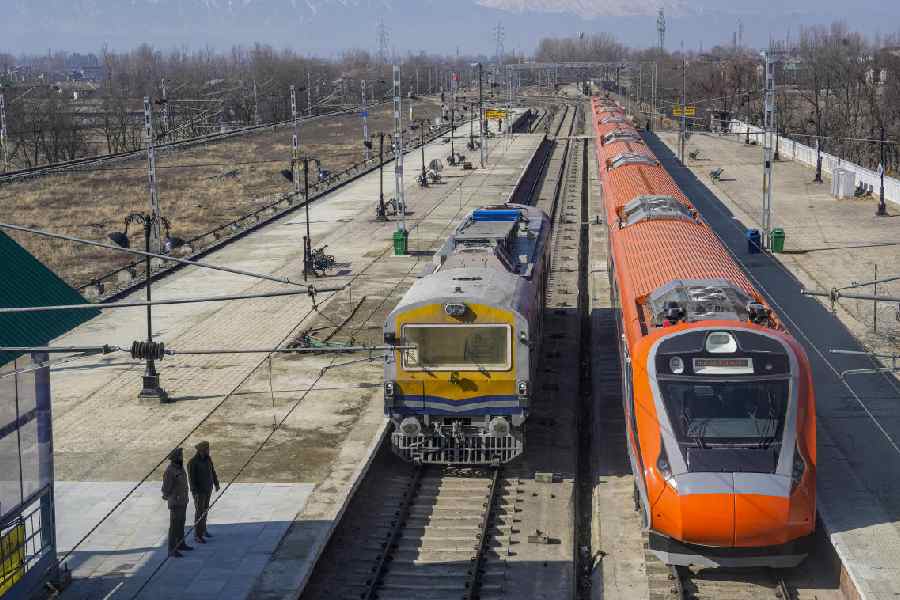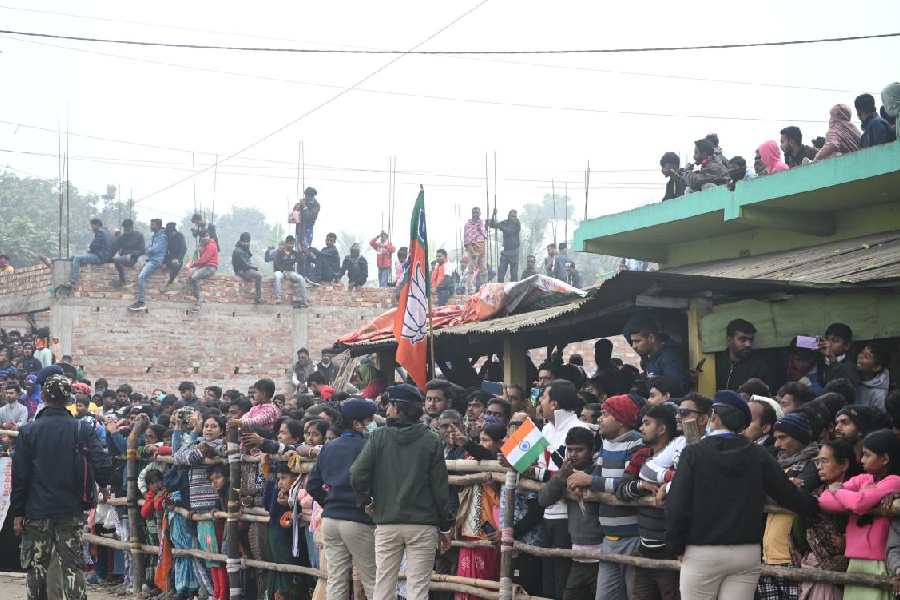 |
 |
 |
 |
 |
 |
 |
 |
 |
| (From top): the facade of Trent’s Star India Bazaar and Simone Tata; Krish Iyer, CEO, Piramyd Retail at a TruMart convenience store; a Pantaloons lifestyle store and Kishore Biyani; a customer browses for music at a Music World store and Sanjiv Goenka; the Odyssey India store and T S Ashwin, managing director |
It?s called the one-stop shop and it?s aimed at harried commuters. The next time you walk into a Delhi metro station, you may be able to buy your week?s groceries, outfit your kids and even choose that birthday gift for a friend. Two weeks ago, Pantaloon Retail India?s managing director Kishore Biyani took his Big Bazaar and Food Bazaar discount stores to Delhi?s Inderlok and Wazirpur metro stations. His concept was simple: as consumers spend large chunks of their day commuting, and large numbers use the metro, it made good business sense to tap these buyers.
Biyani?s move is typical of the blitzkrieg tactics big retailers are employing to grab every chance to get a larger share of the increasingly affluent consumer?s wallet. Consider this: by year end, the company will open eight new Pantaloon stores, eight new Big Bazaars and nine new Food Bazaars (the smaller supermarkets). Also, it?s opening two or three Fashion Stores (its new chain).
In two years those numbers will shoot through the roof. By June 2007, Biyani plans to have 70 Food Bazaars, 55 Big Bazaars, 30 Pantaloons and 10 Centrals (that?s his chain of malls). He currently has about 2 million sq ft of store space and that?s slated to more than triple to 6.5 million sq ft by 2007. ?The opportunity is very large so we can expect an aggressive build-up for the next 5-10 years,? says Biyani.
Or take the RPG group with its Spencer?s, Food World and Music World stores. The group plans to increase its three Spencer?s hypermarkets (called Giant earlier) to 16 over the next 18 months, and then to 30 over the subsequent 12 months. It will open a Spencer?s in central Delhi next month, followed by one each in Faridabad and Ghaziabad. It?s also moving to cities like Kochi, Aurangabad and Nasik in the not too distant future.
Moreover, it will double its 235 Music World stores to 470 over the next 30 months. Many of these stores will come up in Tier 2 towns, catering to regional music tastes. In fact, the group already has a Music World corner at ITC?s e-choupal at Sihoor in Madhya Pradesh. Says Sanjiv Goenka of the RPG Group, ?In the next 30 months there will be huge and frenetic activity on all these fronts.?
The rapid expansion comes as retailers spy gold among the largely undeveloped organised retail sector and move fast to capitalise on it. Says R Subramanian, managing director, Subhiksha Trading Services, ?The low base and low share of organised retail provide mouth-watering prospects for growth.?
Players like the Tata group?s Trent and the Ajay Piramal group?s Piramyd Retail too have ambitious plans. Trent, which started out with the Westside stores, ventured into the hypermarket format last October when it launched Star India Bazaar in Ahmedabad. Now, the company intends to launch two more hypermarkets in Mumbai and Bangalore before March 2006. It will also add five or six Westside stores a year over the next two years.
Piramyd?s plans are even more far-reaching. It intends to add five Piramyd megastores (large department stores) and 22-24 TruMart supermarket and convenience stores retailing food, home and personal care products a year over the next three years. By December alone, it will open four more Piramyd stores, two in Pune and one each in Delhi and Ludhiana.
The cracking pace being set by retail majors is evident if you look at Shoppers? Stop. Between 1991 and 2000, the Shoppers? Stop chain had grown to just five stores. By June, it had added another 15. Now, by March 2008, it intends to almost double its tally by adding another 19 stores. This will take its retail space from 800,000 sq ft to 2.5 million sq ft. It?s also venturing into the hypermarket format and is expected to launch its first one by early 2006.
Even regional players have got into the fray. Take discount store pioneer, Subiksha Trading with 145 stores in 31 centres in Tamil Nadu and Pondicherry. The company?s now going national. Over the next nine to 12 months, it plans to open over 450 stores in Gujarat, Andhra Pradesh, Karnataka, Mumbai and Delhi. It will open 77 new stores by end August alone.
Or take the Chennai-headquartered Odyssey India, which sells books, music, toys, stationery and the like. The company is adding stores in Hyderabad, Vizag and Coimbatore next year. And by mid-2008, it plans to enter cities like Bangalore, Cochin and Pune as well as Tier 2 towns like Mysore, Mangalore, Madurai and Vijaywada.
What?s triggering this huge burst of growth? Obviously, there?s huge potential for growth ? organised retail accounts for barely 3 per cent of the total retailing market in the country and its share is slated to increase to 10 per cent to 12 per cent by 2010. ?It is a realisable opportunity,? says Krish Iyer, CEO, Piramyd Retail.
Retailers are also expanding because they are much more confident today, points out Harminder Sahni, principal and head of the retail practice at consultancy firm KSA Technopak. He says, ?In the last four years, retailers have run pilots and gone to different centres. So they?ve got the hang of the business.?
 |
 |
| Gibson Vedamani, COO, Retailers Association of India (above) and R Subramaniam, MD, Subhiksha Trading Services |
In fact, most of the large retailers have spent the last four to five years fine-tuning formats and honing strategies. For instance, Subhiksha added only 25 stores in the last two years as it was putting its systems in place for its multi-city expansion. Now, besides entering Andhra Pradesh, Karnakata, Gujarat, Mumbai and Delhi in phase one, it intends to venture into Kerala, the rest of the north and probably Calcutta in phase two starting next June.
As Simone Tata, chairman, Trent, says, ?Ten years ago, the retailing industry was practically non-existent. With the success it has met since, there is every encouragement to grow further and also no reason to stay static.?
Also, there?s the fact that the Indian consumer is more affluent than before. And a large slice of the Indian population is in the 20-49 age group, the ones known as the biggest spenders.
Gibson Vedamani, chief operating officer, Retailers Association of India, says that shopping habits too are changing. ?With retailers offering experiential shopping, it?s no longer a monthly chore but has become a new form of entertainment,? he says. That?s only too evident from the hordes seen at malls across the country.
Retailers are also expanding because quality retail space is easily available today. For instance, according to KSA Technopak, the country is likely to have around 200 new malls by the end of 2006.
Also, the country?s infrastructure is getting better. That, according to experts like Vedamani, will help organised retailers aiming to expand in Tier 2 and 3 towns.
The retailers are banking on the expansions to increase their turnover and profits since retailing is a low-margin business. Says Piramyd?s Iyer, ?Unless you expand rapidly, margins don?t go up because you need bargaining power with suppliers.?
All this activity means huge investments. Pantaloon has drawn up investments of Rs 300 crore over the next two years. Subhikhsa will invest Rs 150 crore in its phase one expansions and around Rs 80 crore to Rs 100 crore in phase two. Piramyd will raise Rs 160 to Rs 200 crore through an initial public offering in September to meet its requirements over the next two years.
The targets too are impressive. For instance, Pantaloon is expected to report turnover of Rs1,100 crore for the year ended June 2005 nearly double the Rs 650 crore it posted last year. Says Biyani, ?We should be able to grow at nearly 100 per cent for the next two years at least and have a vision of a turnover of $2billion by 2010.?
 |
Similarly, Iyer expects Piramyd Retail to triple its 2004-05 turnover of Rs 69 crore to Rs 220 crore this year. And then it expects to double it to Rs 450 crore in 2006-07 and Rs 876 crore in 2007-08.
There?s one more unspoken reason why Indian retailers are hurrying with their shopping plans. Everyone is waiting for the opening of the retail sector to foreign giants like Wal-Mart and French company Carrefour. The Indian retail majors need to become big to take on the Wal-Marts of the world. But most say their local knowledge will give them an edge over foreign entrants (and some may open new stores quickly to sell to the foreigners).
But unlike in the West, where retailers tend to stick to one or two core formats, Indian retailers are doing things slightly differently. They are getting into different formats at the same time.
Take Pantaloon. Apart from its Big Bazaar hypermarkets, Food Bazaar supermarkets, and Pantaloons lifestyle stores, the company owns seamless malls, which it has branded Central. It even launched a budget fashion chain, Fashion Station, this April. And if that?s not enough, it?s experimenting with chai-and-samosa or what it calls ?chamosa? bars. Also, at a different level, it?s entering the home store format. Says Biyani, ?We believe in selling to everyone, selling everything, and selling from everywhere. We do not look at formats, but at concepts.?
A lot of department store players like Trent and Shoppers? Stop are also turning their focus on hypermarkets.
Vedamani believes that the retailers are expanding into different lines as the opportunities are vast. ?There are huge gaps in the market, waiting to be filled by companies that have the internal efficiencies to do so,? he says.
Retailers are also exploring new formats because they want to increase their take of the consumer?s wallet. After all food, grocery and apparel account for 70-72 per cent of the Indian consumer?s spending. And those like Piramyd are even willing to take on the local kirana stores. Piramyd has an aggressive plan for its TruMart FHPC stores. It?s adopting a hub-and-spoke and cluster approach under which it will set up 6,000sq ft to 8,000 sq ft TruMart supermarkets and 2,800-sq ft TruMart Daily convenience stores.
?Every consumer has two kinds of needs: monthly and top-ups like milk and bread, for which he goes to the local kirana store. That?s the need to which we will cater. We want to maximise the share of the consumer?s wallet,? says Iyer.
Not everyone is expanding across formats, though. Subhiksha prefers to stick to its value-focused discount store model, providing necessities like food, grocery and medicines. ?We believe that there is enough scope to grow in the area we are in now,? says Subramanian.
As the players scale up, however, they are likely to hit constraints like the shortage of trained staff. Managing such rapid growth is also tough. For instance, Shoppers? Stop ran into losses in 1999-00 and 2000-01, when it scaled up too rapidly without putting the right systems in place. But the players believe they?ve done their homework this time around. So for now, there?s no stopping them and consumers can happily ?shop till they drop?.
Photograph of Krish Iyer by Gajanan Dudhalkar
Spending patterns
We all know that the Indian consumer is spending more readily today and is even spoilt for choice. But what is he or she splurging on? According to KSA Technopak’s Consumer Outlook Survey 2005, Indians are spending a smaller percentage of their disposable income on essentials like food and groceries (what Technopak calls regular spends) and much bigger chunks on loan repayments and mobile phone bills (emerging spending in Technopak lingo). Significantly, they are saving a smaller percentage of their income.
According to the survey, the share of regular spends is dipping, driven by the decline in savings and investments, food and groceries and consumer durables, while that of emerging spends is rising. Within regular spends, however, the share of experiential spends — films, music and theatres — is increasing.
In emerging spends, the share of payments to household help and interest have trebled while the share of mobile bills has risen about five times over 2001-02.
In the regular spends category, the trends are:
• Food & grocery: This category’s share has dropped from 37.8 per cent in 2001-02 to 27.5 per cent in 2004-05, primarily because of falling prices and trading down. In absolute terms, though, there’s a marginal increase over the previous year, fuelled by organised retail formats and upgradation of kirana stores.
• Consumer durables: The share of spending has slipped from 5.9 per cent in 2001-02 to 4.1 per cent in 2004-2005.
• Books & music: Their share has risen from 5.3 per cent in 2001-02 to 6.1 per cent in 2004-05. In absolute terms too, the category has exhibited major growth.
• Savings and Investments: Down from 5.0 per cent in 2001-02 to 3.3 per cent in 2004-05, reflecting the “splurge” rather than “save” mindset of the new Indian consumer.

